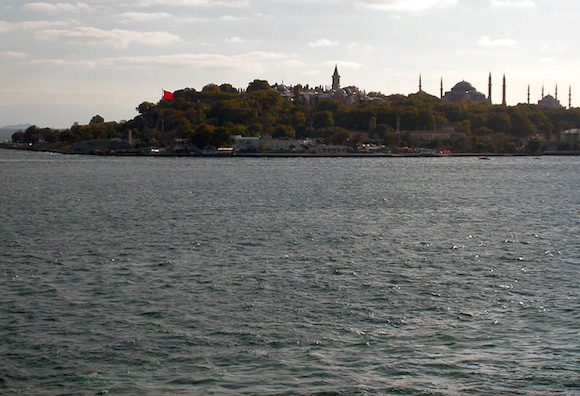
While the more common founding of the Doric colony of Byzantium by the Greek city-state of Megara in 660 BCE is typically cited as the original establishment of Istanbul, recent construction in the undersea Marmaray railway has unearthed evidence of a Neolithic settlement dating back to as early as the seventh millennium BCE. Believed to have been built over seven hills – each bearing a historic mosque – Istanbul has been referred to as the City of Seven Hills, and was even called New Rome by the Roman Emperor Constantine I. And by the nineteenth century the city would acquire a number of names used by foreigners and locals alike. The official name however, established with its naming as the capital of the Eastern Roman Empire in 330 CE, would remain Constantinople until the Republic of Turkey was established on October 29, 1923.
The reason for the name enduring as well as it did, has to do with the resulting shift in Roman power and a corresponding cultural shift when Constantinople was made the capital, as Classical Greek education became the norm, and the rise of Christianity saw numerous churches built across the city – the greatest of which would be the Hagia Sofia which would remain the world’s largest cathedral for over a thousand years.
It also helped situated as it was within the walls and seafront, the location ensured Istanbul could withstand invaders from the east and the advance of Islam for centuries. Before the Ottoman conquest it would become the largest and wealthiest of the cities on the European continent, and even at points during this period the largest in the world.
In fact it would remain so until the Turkish authorizes formally requested on March 28, 1930 that foreigners adopt Istanbul as the official name of the city.
![UNESCO site: Istanbul, Turkey [Repost]](http://www.cultureaddicthistorynerd.com/wordpress/wp-content/uploads/2011/12/bosphorus_bridge-150x150.jpg)

![The decline of Ephesus [Repost]](http://www.cultureaddicthistorynerd.com/wordpress/wp-content/uploads/2012/06/celsus-library-150x150.jpg)
![Ayasofya Muzesi (Hagia Sophia) [Repost]](http://www.cultureaddicthistorynerd.com/wordpress/wp-content/uploads/2011/12/ayasofya_chandelier-150x150.jpg)
![Yerebatan Sarnici: What’s in a Name? [Repost]](http://www.cultureaddicthistorynerd.com/wordpress/wp-content/uploads/2012/02/medusa_head2-150x150.jpg)
![Yerebatan Sarnici (The Basilica Cistern) [Repost]](http://www.cultureaddicthistorynerd.com/wordpress/wp-content/uploads/2011/12/gary_cistern_sign-150x150.jpg)



































